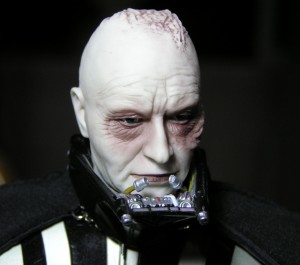
Just came back from my usual thrice-a-week run, from my apartment up to Prospect Park, around the loop, and back. Weather was cool, I made decent time, and I felt great—until I got back. That’s because, as I walked through the housing project across the street from my apartment, I was, well, I guess you’d say accosted by one of the teenagers hanging out in front of the projects. He motioned for me to take off my headphones, and when I did, he said, quietly, “Give me all you got in your pockets.”
He had two friends with him, both of them leaning against the railings on the sides of the path.
“I got nothing in my pockets,” I said, continuing to walk. Which was true. I don’t carry much when I run.
“What about that?” he said, gesturing at the iPod Nano strapped to my arm. “You’re gonna get beat up, right now.”
“You’re joking,” I said, and walked past him, putting my hand on his shoulder as I did.
He didn’t do anything. His friends made sounds like they were amused at his chutzpah. I took a few more steps and called over my shoulder, “You’re funny, man!”
Two minutes later, I was through my gate, and shaking a little. I mean, this wasn’t my first mugging (attempted or actual, though this was my first in NYC), and wasn’t that different from the other times (I usually don’t have anything worth taking). And, fine, I know it’s the projects, and I don’t even mind kids messing around a little. They’re teenagers—they’re going to be jerks.
But there’s another thing: These projects are getting worse. Last weekend, there were three or four gunshot incidents, and a few weeks before that a 16-year-old girl was shot to death right on my block. So: How seriously am I supposed to take this shit today? Do I call the cops on these kids, or will that start the kind of war I don’t want to deal with? (I run through there frequently, and hell, I live across the street from this fucking place!) But the fact is, I don’t want to have to put up with this attitude, and no one else should have to, either.
As I run through the possibilities in my mind, I think of how the Brownstoner commenter crowd would react. “Fuck you, gentrifier, you moved to Brooklyn” is what they’d probably say, and I understand that. It wasn’t like I expected garlands of flowers to be spilling from the towers. But I live here, I’ve got a kid here, and there’s at least a dozen more very young kids on my block alone. I don’t want to have to tell Sasha (when she’s older) not even to walk through the projects to get from one place to another. And I don’t want to move—I love my block, with its trees and families and peaceful atmosphere only occasionally disrupted by violence. But I don’t want to get robbed, don’t want to get shot, and don’t want to feel like an asshole. So: What the fuck do I do?

